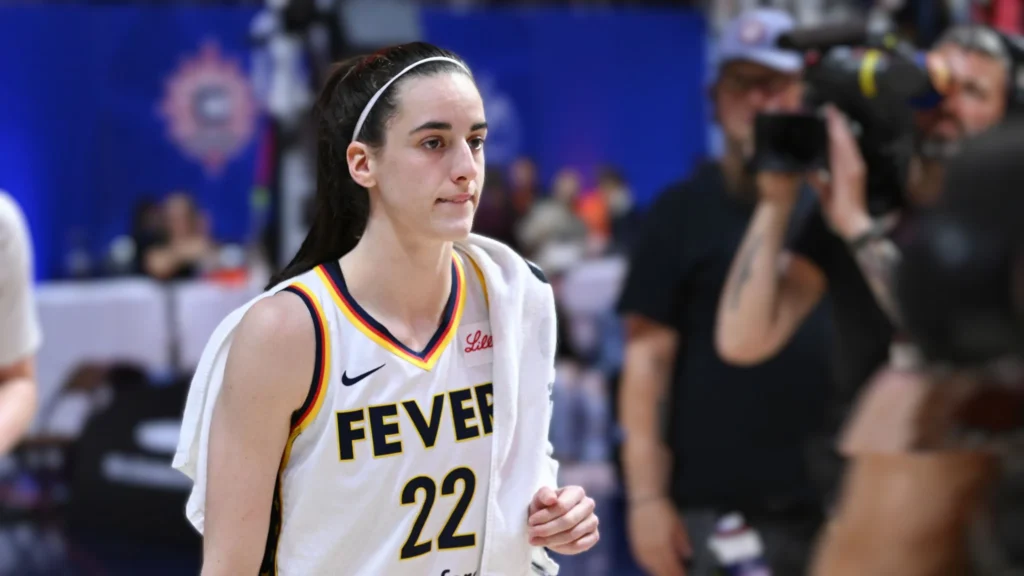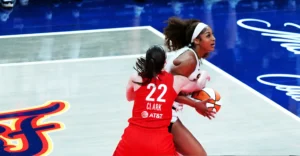
In the swirling tempest of WNBA narratives, few voices cut through the noise quite like ESPN’s Stephen A. Smith. And when it comes to the phenomenon that is Caitlin Clark, Smith’s recent commentary has ignited a fresh wave of discussion, suggesting that some of the “vitriol” directed at the Indiana Fever rookie is, in his words, “self-induced.” More intriguingly, he’s drawn a compelling, if controversial, comparison to none other than NBA icon Larry Bird.
This isn’t to say Smith dismisses the undeniable reality of the immense pressure and scrutiny Clark faces. He’s been a vocal proponent of her impact, acknowledging her as the “rising tide that’s lifting all boats” in the WNBA, driving unprecedented viewership and attendance. The resentment some players might feel towards her sudden, astronomical popularity is, in part, a natural consequence of such a seismic shift. However, Smith contends that Clark’s own on-court persona and actions contribute to the heightened emotions.
“She’s also somebody like Larry Bird was, shooting the lights out and stuff like that,” Smith remarked, specifically highlighting Clark’s tendency to “clap at ya” and “antagonize ya.” This isn’t just about her extraordinary talent with the basketball; it’s about her competitive fire, a fiery demeanor that often spills over into vocal exchanges and assertive body language.
The comparison to Larry Bird, the legendary Boston Celtics forward, is particularly insightful. Bird, much like Clark, was a generational talent whose game transcended conventional expectations. He was a prolific scorer, an elite passer, and a relentless competitor. But he was also one of the most notorious and effective trash-talkers in NBA history. Stories abound of Bird telling defenders exactly how he was going to score on them before executing the move flawlessly. He would get into opponents’ heads, sometimes calmly, sometimes with a sneer, but always with a chilling self-assurance that he would back up every word. The infamous incident with Dr. J, where Bird’s relentless trash talk ultimately led to a physical altercation, is a testament to the raw intensity he brought to the court.
Smith implies that Clark, consciously or unconsciously, taps into a similar vein of competitive psychology. Her confident gestures, verbal jabs, and unwavering belief in her abilities, while admirable and a hallmark of elite athletes, can also be perceived as provocative by opponents. When a player, especially one garnering the level of attention Clark receives, backs up her talk with incredible play, it can amplify the desire of others to “shut her down” – not just through defense, but sometimes through increased physicality and emotional engagement.
This isn’t an indictment of Clark’s character; rather, it’s an analysis of the dynamic inherent in high-stakes professional sports. Great competitors thrive on that edge. They seek to dominate not just statistically, but mentally. And while fans celebrate the bravado, it can inevitably lead to friction on the court. The recent scuffles and flagrant fouls involving Clark are not isolated incidents; they are part of a larger competitive landscape where emotions run high, and players react to perceived challenges.
In essence, Stephen A. Smith’s commentary serves as a reminder that the narrative surrounding Caitlin Clark’s WNBA journey is multifaceted. It’s a blend of groundbreaking popularity, historical impact, and the gritty, often confrontational reality of top-tier competition. Her ability to “talk the talk and walk the walk,” much like Larry Bird before her, makes for compelling television and propels the league forward, even if it occasionally comes with a side of “self-induced vitriol.”

